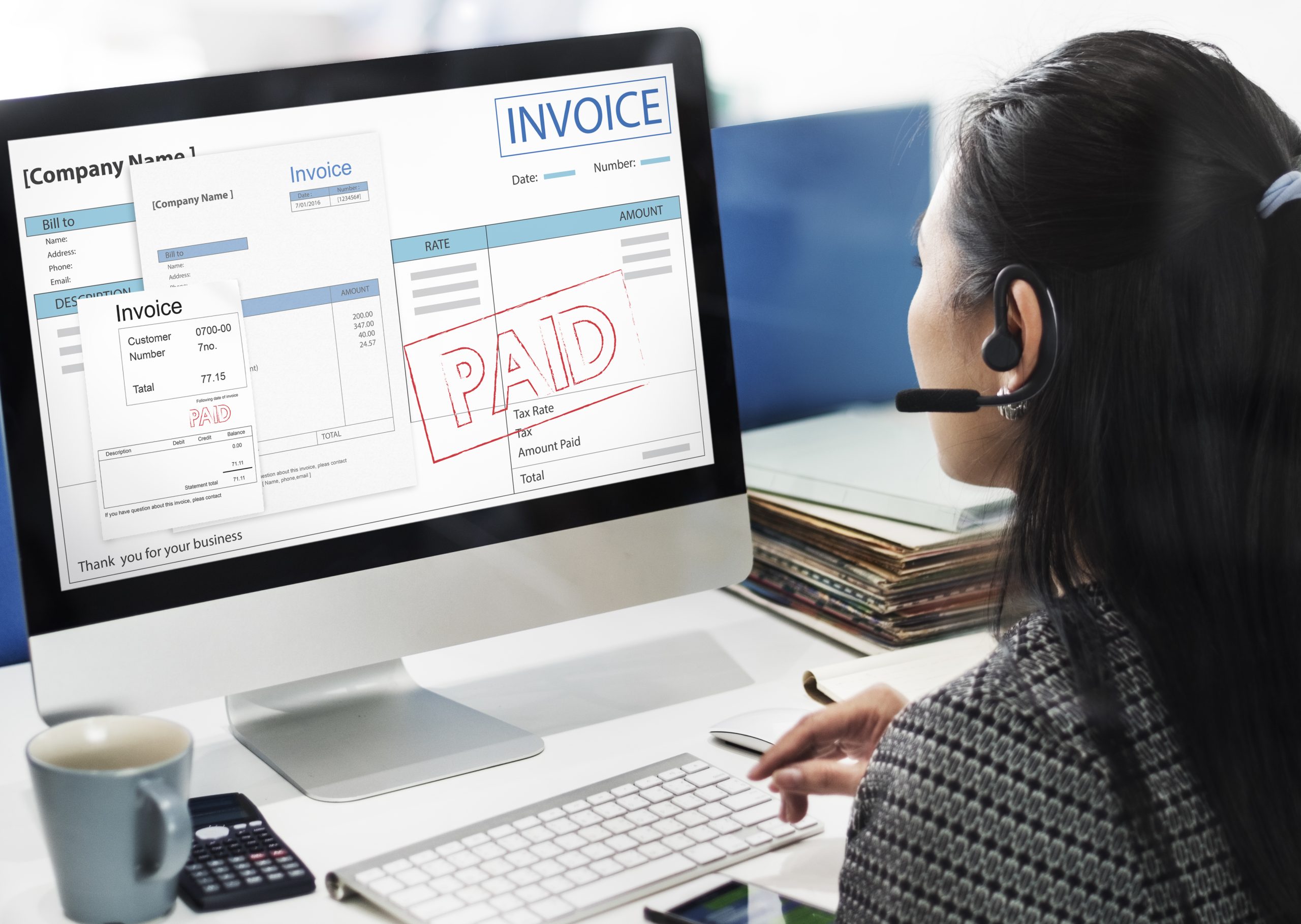Are you tired of spending countless hours on manual invoicing and billing tasks? Imagine a world where your financial processes run like clockwork, freeing up valuable time for you to focus on growing your business. Welcome to the future of finance: automated invoicing and billing systems.
In today’s fast-paced business environment, efficiency is key to staying competitive. Yet, many companies still struggle with time-consuming, error-prone manual billing processes. This is where automated invoicing and billing systems come in, revolutionizing the way businesses handle their financial operations. From streamlining workflows to enhancing accuracy and improving cash flow, these systems are transforming the financial landscape for businesses of all sizes.
In this comprehensive guide, we’ll explore the ins and outs of automated invoicing and billing systems. We’ll delve into how these systems can streamline your financial processes, help you choose the right solution for your business, and maximize your return on investment. We’ll also cover crucial aspects like implementation, security, compliance, and future trends. So, buckle up and get ready to discover how automated invoicing and billing can take your business to new heights!
Automated invoicing and billing systems are software solutions designed to streamline financial processes by automatically generating, sending, and tracking invoices and bills. These systems handle the entire billing cycle, from creating invoices to recording payments, significantly reducing manual effort and human error.
Automated invoicing and billing systems typically include the following features:
- Invoice generation and customization
- Recurring billing capabilities
- Payment reminders and late fee calculations
- Multi-currency support
- Integration with accounting software
- Reporting and analytics tools
| Feature | Description |
| Invoice Generation | Creates professional invoices based on predefined templates |
| Recurring Billing | Automatically bills customers at set intervals |
| Payment Reminders | Sends automated reminders for overdue payments |
| Multi-Currency Support | Handles transactions in various currencies |
| Software Integration | Connects with accounting and CRM systems |
| Reporting Tools | Generates financial reports and analytics |
Implementing automated invoicing and billing systems offers numerous advantages:
- Time savings: Reduces manual data entry and invoice processing time
- Improved accuracy: Minimizes human errors in calculations and data entry
- Enhanced cash flow: Speeds up payment collection through timely invoicing and reminders
- Better customer experience: Provides consistent and professional billing communications
- Increased efficiency: Frees up staff to focus on more strategic tasks
- Real-time insights: Offers up-to-date financial data for informed decision-making
By leveraging these systems, businesses can significantly improve their financial operations and overall productivity. With the foundation of automated invoicing and billing systems established, we can now explore how these solutions contribute to streamlining financial processes across various industries.
Now that we understand automated invoicing and billing systems, let’s explore how they streamline financial processes, revolutionizing the way businesses manage their finances.
Automated systems provide real-time visibility into your financial status, allowing for better cash flow management. By generating instant reports and forecasts, businesses can:
- Identify cash flow trends
- Anticipate potential shortfalls
- Make informed decisions about spending and investments
One of the most significant benefits of automated invoicing is the acceleration of payment cycles. This is achieved through:
- Instant invoice generation and delivery
- Automated payment reminders
- Integration with multiple payment gateways
| Traditional Method | Automated Method | Impact |
| Manual invoicing | Instant e-invoices | Faster payment receipt |
| Manual follow-ups | Automated reminders | Reduced late payments |
| Limited payment options | Multiple payment gateways | Improved customer convenience |
Automation significantly reduces human error in financial processes. Benefits include:
- Consistent and accurate calculations
- Automatic tax computations
- Elimination of duplicate entries
By automating data entry, businesses can:
- Save time and resources
- Minimize data entry errors
- Reallocate staff to more strategic tasks
This shift from manual to automated processes not only improves efficiency but also allows for better utilization of human resources in value-adding activities.
Next, we’ll explore how to choose the right automated invoicing and billing system for your specific business needs.
Now that we’ve explored the benefits of automated invoicing and billing systems, let’s focus on selecting the ideal solution for your organization. Choosing the right system is crucial for maximizing efficiency and return on investment.
When considering automated invoicing and billing systems, it’s essential to understand the various pricing models available:
- Subscription-based
- Pay-per-use
- Tiered pricing
- Freemium
Here’s a comparison of these pricing models:
| Pricing Model | Advantages | Disadvantages |
| Subscription-based | Predictable costs, regular updates | May pay for unused features |
| Pay-per-use | Cost-effective for low volume | Unpredictable costs |
| Tiered pricing | Scalable, flexible | Can be complex to understand |
| Freemium | Low initial cost, try before you buy | Limited features in free version |
Integration is crucial for seamless operations. Look for systems that can integrate with:
- Accounting software
- CRM systems
- Payment gateways
- Project management tools
Research and compare various automated invoicing and billing systems. Consider factors such as:
- User interface and ease of use
- Customer support and training
- Mobile accessibility
- Customization options
To choose the right system, thoroughly evaluate your organization’s requirements:
- Current invoicing volume
- Projected growth
- Industry-specific features
- Compliance requirements
With these factors in mind, you’ll be well-equipped to select an automated invoicing and billing system that aligns with your business goals and processes. Next, we’ll explore the implementation process to ensure a smooth transition to your new system.
Now that we’ve explored the benefits and selection process of automated invoicing and billing systems, let’s dive into the implementation phase. This crucial step requires careful planning and execution to ensure a smooth transition for your business.
Effective staff training is essential for successful implementation. Consider the following approaches:
- Hands-on workshops
- Online tutorials
- Peer-to-peer mentoring
- Ongoing support resources
| Challenge | Solution |
| Resistance to change | Clear communication and highlighting benefits |
| Data accuracy concerns | Thorough testing and verification processes |
| Integration issues | Partnering with experienced system integrators |
| User adoption | Incentivizing early adopters and showcasing success stories |
Assess current data quality and structure
- Cleanse and standardize data before migration
- Perform a trial migration to identify potential issues
- Develop a rollback plan in case of unexpected problems
- Schedule migration during off-peak hours to minimize disruption
A well-planned transition is critical for minimizing disruptions to your business operations. Consider these key steps:
- Set realistic timelines
- Establish clear milestones and checkpoints
- Assign roles and responsibilities to team members
- Create a communication plan for stakeholders
- Develop contingency plans for potential setbacks
By carefully addressing each of these aspects, you’ll be well-positioned to successfully implement your automated invoicing and billing system. Next, we’ll explore how to maximize your return on investment by leveraging advanced features of these systems.
Now that you’ve implemented an automated invoicing and billing system, it’s time to explore how to maximize your return on investment by leveraging advanced features. Let’s dive into the key functionalities that can significantly boost your efficiency and profitability.
Seamless integration with your existing accounting software is crucial for maximizing ROI. This integration allows for:
- Automatic synchronization of financial data
- Elimination of manual data entry errors
- Real-time updates of financial records
Advanced reporting and analytics tools provide invaluable insights into your business’s financial health:
- Customizable dashboards for at-a-glance performance metrics
- Detailed financial reports for informed decision-making
- Trend analysis to identify areas for improvement
| Report Type | Benefits |
| Cash Flow | Track incoming and outgoing funds |
| Accounts Receivable Aging | Manage outstanding payments |
| Revenue by Client | Identify top customers |
For businesses operating globally, these features are essential:
- Automatic currency conversion for international transactions
- Localized invoices in clients’ preferred languages
- Compliance with international billing standards
Improve cash flow and reduce late payments with:
- Customizable reminder schedules
- Escalating reminder tones
- Integration with payment gateways for instant payments
Brand consistency and professionalism are enhanced through:
- Tailored invoice designs that match your brand identity
- Dynamic fields for personalized client messages
- Flexible layouts to accommodate different types of services or products
By leveraging these advanced features, businesses can significantly improve their financial processes, enhance customer satisfaction, and ultimately drive a higher return on their investment in automated invoicing and billing systems. Next, we’ll explore the critical aspects of ensuring security and compliance in these systems.
Now that we’ve explored how to maximize ROI with advanced features, it’s crucial to address the critical aspects of security and compliance in automated invoicing and billing systems.
Keeping your automated invoicing and billing system up-to-date is essential for maintaining security and performance. Regular updates often include:
- Security patches
- Bug fixes
- Feature enhancements
Implementing a proactive maintenance schedule can help prevent vulnerabilities and ensure smooth operation. Consider the following maintenance tasks:
- Weekly system checks
- Monthly performance reviews
- Quarterly security audits
Adhering to industry-specific regulations is non-negotiable when handling financial data. Automated systems must comply with standards such as:
- GDPR (General Data Protection Regulation)
- PCI DSS (Payment Card Industry Data Security Standard)
- SOX (Sarbanes-Oxley Act)
| Regulation | Key Requirements | Impact on Invoicing |
| GDPR | Data protection and privacy | Secure storage and processing of customer information |
| PCI DSS | Secure payment card transactions | Encrypted transmission of payment details |
| SOX | Financial reporting accuracy | Audit trails and internal controls |
Implementing robust data encryption and protection measures is crucial for safeguarding sensitive financial information. Key security features include:
- End-to-end encryption for data transmission
- Multi-factor authentication for user access
- Regular data backups and disaster recovery plans
By prioritizing these security and compliance measures, businesses can ensure their automated invoicing and billing systems operate safely and efficiently. Next, we’ll explore the exciting future trends shaping this technology landscape.
As automated invoicing and billing systems continue to evolve, several exciting trends are shaping the future of financial processes. Let’s explore these emerging technologies and their potential impact on businesses.
Machine learning is set to revolutionize automated invoicing and billing systems. These intelligent algorithms can:
- Learn from past transactions to identify patterns
- Automatically categorize expenses
- Detect and flag potential errors or fraudulent activities
- Improved accuracy in data entry
- Faster processing times
- Reduced manual intervention
- Enhanced fraud detection
With the increasing reliance on smartphones, mobile-first solutions are becoming essential. Future invoicing and billing systems will prioritize:
- User-friendly mobile interfaces
- Real-time notifications and alerts
- On-the-go invoice creation and approval
- Integration with mobile payment platforms
Blockchain technology is poised to transform the security landscape of automated invoicing and billing systems. Key advantages include:
- Immutable transaction records
- Enhanced transparency
- Reduced risk of fraud and tampering
- Improved traceability for auditing purposes
Artificial intelligence will play a crucial role in providing businesses with valuable insights through predictive analytics. These advanced systems will:
- Forecast cash flow based on historical data
- Identify potential late payments before they occur
- Suggest optimal payment terms for different clients
- Provide personalized recommendations for improving financial processes
As we look to the future, these trends will undoubtedly shape the landscape of automated invoicing and billing systems, offering businesses unprecedented efficiency, security, and insights.
Conclusion :
Automated invoicing and billing systems have become essential tools for businesses looking to streamline their financial processes and improve efficiency. By implementing these systems, companies can reduce errors, save time, and enhance their overall financial management. From selecting the right solution to maximizing ROI through advanced features, businesses can reap significant benefits by embracing automation in their invoicing and billing workflows.
As technology continues to evolve, the future of automated invoicing and billing systems looks promising. With advancements in artificial intelligence and machine learning, these systems will become even more intelligent and capable of handling complex financial tasks. To stay competitive and efficient, businesses should consider adopting automated invoicing and billing systems as part of their digital transformation strategy. By doing so, they can focus on growth and innovation while ensuring their financial processes remain secure, compliant, and optimized for success.
Interested in improving your customer satisfaction, increasing client retention, preventing revenue leakage, maximizing efficiency and effectiveness? Register for a demo of ERPCA, India’s first multi-lingual, mobile-app based practice management software for CA firms, tax consultants, financial services advisory firms and more. Better still, sign up for a 14-day free trial of ERPCA and see for yourself the wonderful features and benefits of this software.










